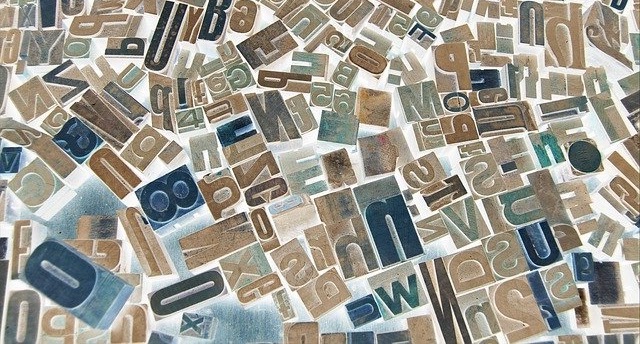Nepal is a small country geographically, but it is very rich socially, culturally, and linguistically. Nepal is a nation of diverse castes, cultures, and languages.
From the linguistic point of view, four of the world’s most popular language family’s languages spoken in Nepal, are Bharopeli, Chinese-Tibetan, Dravidian, and Agneli families.
It is clear from the recent census data that the number of languages is increasing in Nepal. It is increasing linguistic loyalty to one’s language, seeking one’s identity, increasing the level of education, being linguistically organized. The state taking the lead in the preservation, promotion, and development of the language.
- Bharopeli (भारोपेली) Language family
Nepal also has the largest number of speakers of the languages of this family, which has the largest number of speakers in the world.
The official working language ‘Nepali’ is also one of the Bharopeli family. Languages with rich literature such as Nepali and Maithili belong to this language family.
According to the National Census of Nepal 2068, the following language belongs to Bharopeli language family, it percentage of spoken in Nepal;
Nepali (नेपाली)– 44.6 percent, Maithili (मैथिली)- 11.7 percent, Bhojpuri (भोजपुरी)- 6.7 percent, Tharu (थारु)- 5.8, percent,
Bajjika (बज्जिका)- 2.99 percent,
Dotelli (डोटेली)- 2.97 percent,
Urdu (उर्दु)- 2.60 percent,
Awadhi (अवधी)- 1.9 percent,
Baitdaley (बैतडेली)- 1.03 percent,
Achhami (आछामी)- 0.54 percent,
Rajbanshi (राजबंशी)- 0.8 percent,
Hindi (हिन्दी)- 0.3 percent,
Bajhangi (बझाङी)- 0.26 percent,
Danuwar (दनुवार)- 0.2 percent,
Magahi (मगही) -0.13 percent,
Rajasthani/Madwari (राजस्थानी/माडबारी)- 0.10 percent,
Majhi (माझी) – 0.08 percent,
Banga/Bangali (बाङ्ला/बङ्ग्याली) – 0.08 percent,
Tajpuriya (ताजपुरिया)- 0.07 percent,
Angika (अङ्गिका)- 0.07 percent,
Kumal (कुमाल)- 0.04 percent,
Darai (दराई)- 0.10 percent,
Bajureli (बाजुरेली) – 0.04 percent,
Bote (बोटे)- 0.03 percent,
Darchuleli (दार्चुलेली) 0.02 percent,
Sign Language (साङ्केतिक भाषा)0.02 percent,
Gangai (गन्गाइ) 0.01 percent,
Dailekhi (दैलेखी) 0.01 percent,
English (अङ्ग्रेजी) 0.01 percent,
Khas (खस) 0.01 percent,
Sanskrit (संस्कृत) 0.01 percent,
The following language is spoken less than 0.01 percent;
Kisan (किसान), Muslim (मुसल्मान), Haryanvi (हरियान्वी) , Jumli (जुम्ली), Punjabi (पन्जाबी), Udiya (उडिया), Sonaha (सोनाहा), Sindhi (सिन्धी), Dadeldhuri (डडेलधुरी), Assamese (आसामी), Malpande (माल्पाँडे), Kurmali (कुर्माली), Sathani (सधानी), Garhwali (गढवाली), French / French(फ्रेन्च/फ्रान्सेली), Russian (रसियाली), Spanish (स्पेनेली), Arabic (अरबी).
- BhoteBurmese (भोटबर्मेली) language family
This language family is also called the Chinese Tibetan language family. After the Bharopeli language family in Nepal, most of the population belongs to this language family.
In terms of a number of languages, this language family has more languages than the Bharopeli language family. Speakers of this language family are spoken in China, Tibet, Burma, Nepal, India, Bhutan, Bangladesh, Thailand, Vietnam, and other countries.
Tamang, Newari, Magar, Rai, Thakali, Jirel, Meche, Sunuwari, Hayu, Banso Raute, Pahari, Lepcha, Dura, Raji, Kagte etc. languages of this language family are spoken in Nepal. Rai, Kham (Magar), Athapahariya, Lhopa, Dolpali, Waling, Belhare, Manage, Dhuleli, Fangduali, Surel, and Bankaria languages have been added recently.
According to National Census 2068, the number of the Bhote Burmese language family is 70 in Nepal.
- Agneli (अंगेली) language family
Only Santhal or Satar and Khariya languages belong to Agneli language family in Nepal.
Santhal is the language of the Santhal community, they live in the Jhapa district of the Eastern Terai of Nepal and in the bordering states of India such as Bihar, Bengal, and Assam.
Due to a large number of Santhal speakers in India, textbooks in this language are available in Devanagari and Roman scripts. They also have a script called Olchiki.
At the spoken level, limited Santhali language is spoken in the Morang and Jhapa districts of Nepal.
The census data of 2068 shows that the speakers of this language are only 0.19 percent.
Khadiya language is used in Jhapa, Morang, and Kapilvastu. It is an unwritten language and has been used only in oral tradition. According to the 2068 National Census, there are 238 speakers of this language.
- Dravidian (द्रविण) language family
The language spoken by the Uravas of Dravidian origin, scattered from Morang to Parsa in the Eastern Terai, is called Dhangad or Jhangad and is now called Uravan.
Only Jhangad or Dhangad languages belonging to the Dravidian language family are spoken in Nepal.
Scholars say that it is similar to the Kurukh language spoken in Chhota Nagpur, India.
Speakers of this language are found in the Jhapa, Morang, Siraha, and Janakpur districts of Eastern Terai of Nepal. According to the 2068 census, only 0.13 percent of the speakers speak Jhangad as their mother tongue.
- Single language family
Languages that do not match other language families are included. In Nepal, the Kusunda language belongs to this language family.
Kusunda is the language of the Kusundas who gather roots in the dense forest around the Chure Hills, which stretches from the Gandaki region of Nepal to the banks of the Karnali, and depend on the forest for their livelihood.
According to the 2068 National Census, there are only 28 speakers of this language.
In the end,
The In Nepal Census 2068, listed the 123 languages spoken in Nepal.


